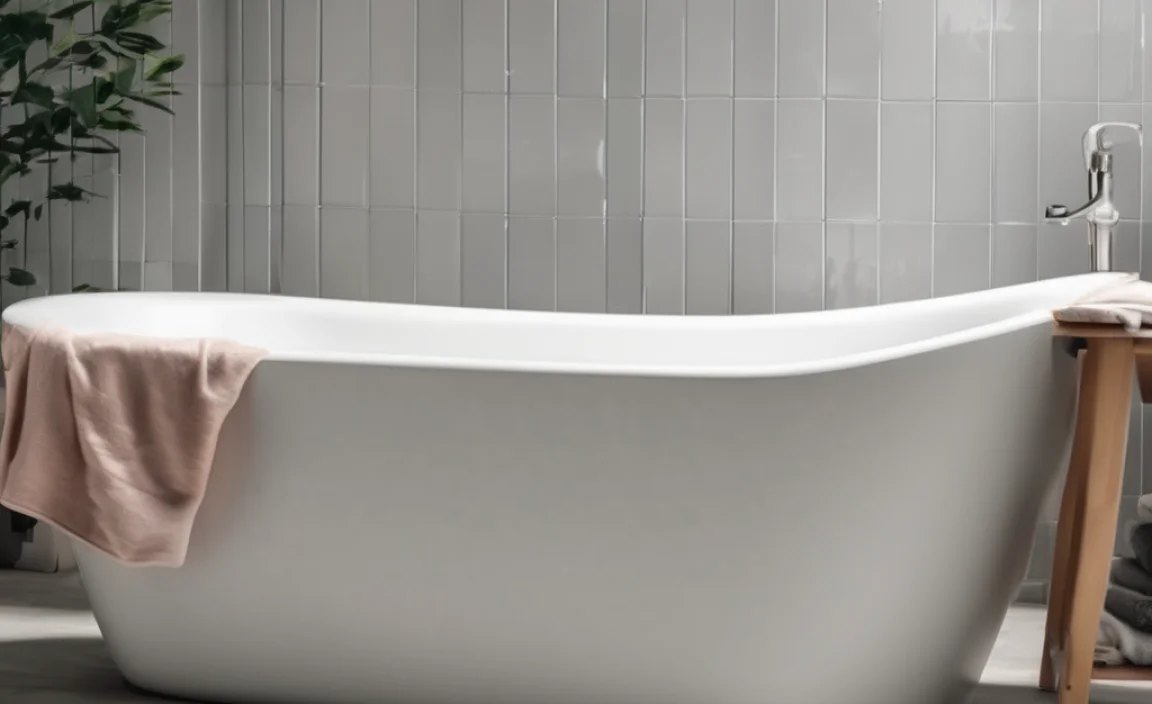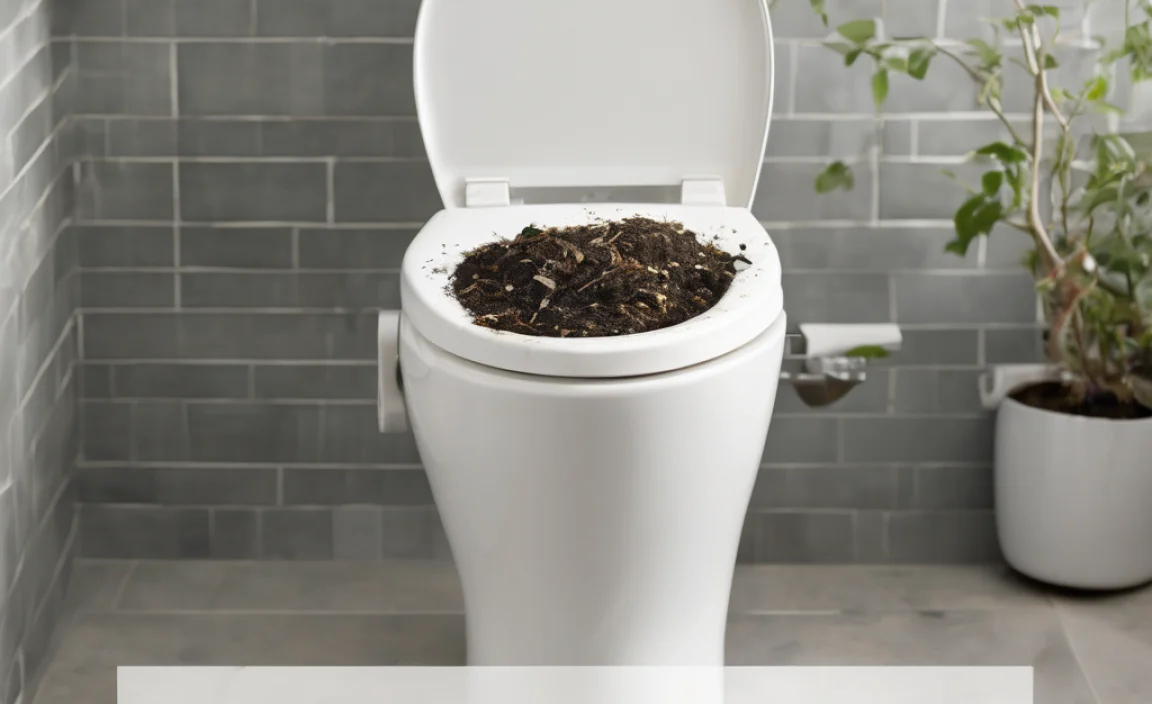Removing decals from your bathtub can be easy! Gently heat the decal with a hairdryer to soften the adhesive. Then, carefully peel it off using a plastic scraper or old credit card. Clean any residue with a mix of baking soda and water. Your tub will look fresh and new in no time!
Bathtub decals can be a fun way to decorate your bathroom, especially for kids. But what happens when you want to remove them? Maybe your tastes have changed, or the decals are starting to peel and look worn. Removing them can seem tricky because you don’t want to damage the tub’s surface. Don’t worry, you can do it yourself with a few simple tools and steps.
In this guide, I’ll walk you through everything you need to know to safely and effectively remove those old decals. We’ll cover the tools you’ll need, how to soften the adhesive, and the best ways to clean up any leftover residue. Get ready to say goodbye to those decals and hello to a fresh, clean bathtub!
Tools You’ll Need

Before you start, gather these simple supplies. Having everything on hand will make the job go smoothly.
- Hairdryer: To soften the decal adhesive.
- Plastic Scraper or Old Credit Card: For gently lifting the decal edges.
- Baking Soda: A mild abrasive for removing residue.
- Water: To make a cleaning paste with baking soda.
- Soft Cloth or Sponge: For wiping and cleaning the surface.
- Spray Bottle (Optional): For applying vinegar solution.
- White Vinegar (Optional): For stubborn residue.
- Gloves (Optional): To protect your hands.
Step-by-Step Guide to Removing Bathtub Decals

Follow these steps to remove your bathtub decals without damaging your tub. Each step is designed to be easy to follow, even if you’re a beginner.
Step 1: Soften the Decal with Heat
Use a hairdryer on a low or medium setting. Hold it a few inches away from the decal and move it back and forth. The goal is to warm the adhesive, making it easier to peel off. Heat the decal for about 1-2 minutes. Be careful not to overheat one spot, as this could damage the tub surface.
Safety Tip: Keep the hairdryer moving and avoid holding it too close to the tub surface.
Step 2: Gently Peel the Edges
Take your plastic scraper or an old credit card and gently try to lift an edge of the decal. Work slowly and carefully to avoid tearing the decal into small pieces. If the edge doesn’t lift easily, apply more heat with the hairdryer. Once you have an edge lifted, continue peeling slowly, using the scraper to help lift the decal as you go.
Pro Tip: Work at a low angle with your scraper to avoid scratching the tub.
Step 3: Remove the Decal
Continue peeling the decal slowly and steadily. If it starts to tear, reheat the area with the hairdryer. Use the scraper to help lift any stubborn spots. Take your time to ensure you remove as much of the decal as possible in one piece. This will make the cleanup process easier.
Important: Avoid using sharp metal tools, as they can scratch or damage the bathtub surface.
Step 4: Prepare a Baking Soda Paste
In a small bowl, mix baking soda with enough water to form a thick paste. The consistency should be similar to toothpaste. Baking soda is a mild abrasive that can safely remove adhesive residue without harming the tub’s finish.
Alternative: If you prefer, you can use a commercial adhesive remover, but make sure it’s safe for use on bathtubs.
Step 5: Apply the Baking Soda Paste
Apply the baking soda paste to the area where the decal was located. Use a soft cloth or sponge to gently rub the paste onto the adhesive residue. Let the paste sit for about 5-10 minutes. This will give the baking soda time to loosen the remaining adhesive.
Tip: For tougher residue, you can let the paste sit for a bit longer, but don’t let it dry completely.
Step 6: Scrub Gently
After letting the paste sit, use the soft cloth or sponge to gently scrub the area. Use circular motions and apply light pressure. The baking soda will help lift the remaining adhesive. Continue scrubbing until the residue is gone.
Caution: Avoid using excessive force, as this could scratch the tub.
Step 7: Rinse and Dry
Rinse the area thoroughly with warm water to remove all traces of the baking soda paste. Use a clean, soft cloth to dry the surface. Inspect the area to make sure all the adhesive residue is gone. If you still see some residue, repeat steps 4-7.
Final Touch: For extra shine, you can use a bathtub cleaner after removing the residue.
Dealing with Stubborn Residue

Sometimes, the adhesive residue is tough to remove with baking soda alone. Here are a few additional methods you can try.
Method 1: White Vinegar Solution
Mix equal parts white vinegar and warm water in a spray bottle. Spray the solution onto the residue and let it sit for 5-10 minutes. The acidity of the vinegar helps break down the adhesive. After soaking, scrub gently with a soft cloth or sponge and rinse thoroughly.
Note: Always test the vinegar solution in an inconspicuous area first to ensure it doesn’t damage the tub’s finish.
Method 2: Commercial Adhesive Remover
There are many commercial adhesive removers available at hardware stores. When using these products, always follow the manufacturer’s instructions carefully. Make sure the product is safe for use on bathtubs and test it in a small, hidden area first. Apply the remover, let it sit for the recommended time, and then scrub gently and rinse thoroughly.
Safety First: Wear gloves and ensure proper ventilation when using chemical adhesive removers.
Method 3: Eucalyptus Oil
Eucalyptus oil is a natural solvent that can help dissolve adhesive residue. Apply a few drops of eucalyptus oil to a cloth and rub it onto the residue. Let it sit for a few minutes, then scrub gently and rinse thoroughly. Eucalyptus oil has a strong scent, so make sure to ventilate the bathroom well.
Eco-Friendly Option: Eucalyptus oil is a great natural alternative to chemical removers.
Preventing Future Decal Problems
To avoid future headaches with bathtub decals, consider these tips:
- Choose High-Quality Decals: Look for decals that are specifically designed for use in bathtubs and are easy to remove.
- Apply Decals Correctly: Follow the manufacturer’s instructions for applying the decals. Make sure the surface is clean and dry before applying.
- Avoid Overheating: When removing decals, use low to medium heat from the hairdryer to prevent damage to the tub surface.
- Clean Regularly: Regularly clean around the decals to prevent buildup of soap scum and grime, which can make them harder to remove later.
- Consider Alternatives: Instead of decals, consider using removable bath crayons or bath paints for temporary decorations.
Table: Comparing Decal Removal Methods
| Method | Effectiveness | Ease of Use | Safety | Cost |
|---|---|---|---|---|
| Hairdryer and Scraper | Moderate to High | High | High | Low |
| Baking Soda Paste | Moderate | High | High | Low |
| White Vinegar Solution | Moderate to High | High | Moderate | Low |
| Commercial Adhesive Remover | High | Moderate | Moderate | Moderate |
| Eucalyptus Oil | Moderate | High | High | Moderate |
FAQ: Removing Bathtub Decals
Q: Will a hairdryer damage my bathtub?
No, a hairdryer is safe to use as long as you keep it moving and use a low to medium heat setting. Avoid overheating one spot, which could potentially damage the surface. Keep the hairdryer a few inches away from the tub.
Q: Can I use a metal scraper to remove the decals?
It’s best to avoid metal scrapers, as they can easily scratch or damage the bathtub’s surface. Stick to plastic scrapers or old credit cards for a safer alternative.
Q: How long should I leave the baking soda paste on the residue?
Let the baking soda paste sit for about 5-10 minutes. This gives it enough time to loosen the adhesive without drying out completely. For tougher residue, you can leave it on a bit longer, but check periodically.
Q: What if the decal breaks into small pieces when I try to peel it?
If the decal is breaking, apply more heat with the hairdryer to soften the adhesive further. Work slowly and patiently, using the scraper to lift small sections at a time. You may also try using a bit of adhesive remover designed for delicate surfaces.
Q: Can I use any type of adhesive remover on my bathtub?
No, not all adhesive removers are safe for bathtubs. Always check the product label to ensure it’s suitable for use on acrylic or porcelain surfaces. Test the remover in an inconspicuous area first to make sure it doesn’t cause any damage or discoloration.
Q: How do I prevent new decals from becoming hard to remove?
To make future removals easier, clean around the decals regularly to prevent soap scum and grime from building up. Also, consider using high-quality decals designed for easy removal. Applying a thin layer of petroleum jelly around the edges of the decal may also help.
Q: What’s the best way to clean the bathtub after removing the decals?
After removing the decals and any residue, clean the bathtub with a mild bathroom cleaner. Rinse thoroughly with warm water and dry with a soft cloth. This will help restore shine and prevent water spots.
More Tips and Tricks
- Work in a Well-Ventilated Area: Especially when using chemical adhesive removers.
- Wear Gloves: To protect your hands from chemicals and prolonged exposure to water.
- Be Patient: Removing decals can take time, so don’t rush the process.
- Test Solutions: Always test cleaning solutions in a small, inconspicuous area first.
- Consider a Magic Eraser: For very light residue, a slightly damp magic eraser can sometimes work wonders. Be very gentle, as they can be mildly abrasive.
Conclusion
Removing bathtub decals doesn’t have to be a daunting task. By following these simple steps and using the right tools, you can safely and effectively remove those old decals and restore your bathtub’s clean, fresh look. Remember to take your time, be patient, and always test any cleaning solutions in a small area first. With a little effort, you’ll have a decal-free bathtub in no time. Now you can enjoy your clean, refreshed bathroom!






